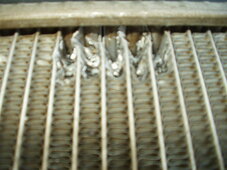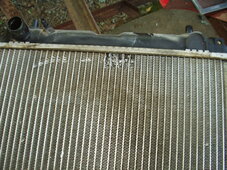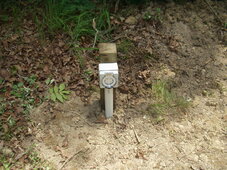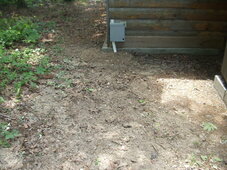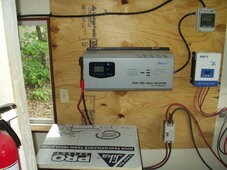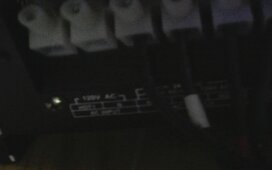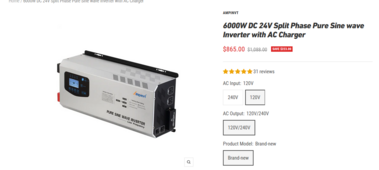Ampinvt 24vDC – 5000w split phase LF inverter/charger review.
I have been wanting a means to supply 240vAC loads and have been constrained by only having 120vAC AIO's. I happened to spot this unit and decided it was a good deal even if I was forced to eat Ramen noodles for a few weeks in order to pay for it.
On May 8th I ordered this Ampinvt split phase inverter from Ampinvt USA. It was a Used -like new offer, that with the additional 7% off new customer discount, added up to $465.35 with free shipping from Ca. It arrived at my place today, Tuesday the 14th. The shipping weight is an incredible 73 pounds! This thing is very heavy and large! It is a LF (low frequency) unit that has a transformer in it to create the split phase output. Bit of a strain for this old guy to toss about. Needs 2 men and a boy.
For testing purposes I have made a temporary setup to my battery bank with 2awg wire and a 125a breaker for isolation. This is quite a bit below the capacity I would need to take full advantage of the 5kW split phase output. When I wire it up permanent it will get the appropriate breakers, fuses and wire gauge. I intend to double the 2awg welding wires which should give plenty of headroom.
I don’t have any 240vAC things to plug in so my testing is entirely 120vAC from the Ampinvt inverters built in plugs. Voltage and frequency was tested with a DMM and also a plug in Kill-A-Watt meter. As you can see in the images it seemed to output within spec for voltages and frequency.
About the heaviest load I can test is my 10 gal. air compressor (I just tested the compressor with my PowMr 3kW unit this morning so it was handy) that is 15a at 120vAC. I ran a 25 ft 12awg extension cord to it from the inverter. I started it 0 psi and than shut it down at 50psi. Started it again and ran it to 100psi. Shut it down and restarted it for final time and ran to full shutoff at 150psi. Unlike my earlier test I had ran with my PowMr 3kW AIO I detected no hesitation or that the inverter struggled at all to run the compressor. It was like a really good grid supply.
My impressions so far are positive (other than the hernia I am dealing with). I likely will not be using the Ampinvt other than as an inverter and never use the charger or AC input/ATS except possibly with a generator. It is a future project to wire it in and mount it properly when I truly need some 240vAC items powered. Thus it will not be tested for longevity or daily usage. That is unless the apocalypse happens or my Elec Co-op cuts me off entirely due to me having solar.
I have been wanting a means to supply 240vAC loads and have been constrained by only having 120vAC AIO's. I happened to spot this unit and decided it was a good deal even if I was forced to eat Ramen noodles for a few weeks in order to pay for it.
On May 8th I ordered this Ampinvt split phase inverter from Ampinvt USA. It was a Used -like new offer, that with the additional 7% off new customer discount, added up to $465.35 with free shipping from Ca. It arrived at my place today, Tuesday the 14th. The shipping weight is an incredible 73 pounds! This thing is very heavy and large! It is a LF (low frequency) unit that has a transformer in it to create the split phase output. Bit of a strain for this old guy to toss about. Needs 2 men and a boy.
For testing purposes I have made a temporary setup to my battery bank with 2awg wire and a 125a breaker for isolation. This is quite a bit below the capacity I would need to take full advantage of the 5kW split phase output. When I wire it up permanent it will get the appropriate breakers, fuses and wire gauge. I intend to double the 2awg welding wires which should give plenty of headroom.
I don’t have any 240vAC things to plug in so my testing is entirely 120vAC from the Ampinvt inverters built in plugs. Voltage and frequency was tested with a DMM and also a plug in Kill-A-Watt meter. As you can see in the images it seemed to output within spec for voltages and frequency.
About the heaviest load I can test is my 10 gal. air compressor (I just tested the compressor with my PowMr 3kW unit this morning so it was handy) that is 15a at 120vAC. I ran a 25 ft 12awg extension cord to it from the inverter. I started it 0 psi and than shut it down at 50psi. Started it again and ran it to 100psi. Shut it down and restarted it for final time and ran to full shutoff at 150psi. Unlike my earlier test I had ran with my PowMr 3kW AIO I detected no hesitation or that the inverter struggled at all to run the compressor. It was like a really good grid supply.
My impressions so far are positive (other than the hernia I am dealing with). I likely will not be using the Ampinvt other than as an inverter and never use the charger or AC input/ATS except possibly with a generator. It is a future project to wire it in and mount it properly when I truly need some 240vAC items powered. Thus it will not be tested for longevity or daily usage. That is unless the apocalypse happens or my Elec Co-op cuts me off entirely due to me having solar.
Attachments
-
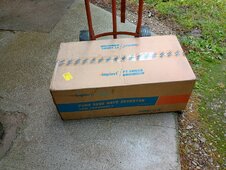 IMG_20240514_133640069_HDR.jpg547.7 KB · Views: 13
IMG_20240514_133640069_HDR.jpg547.7 KB · Views: 13 -
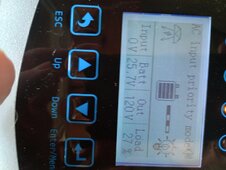 IMG_20240514_140007502_HDR.jpg182.7 KB · Views: 10
IMG_20240514_140007502_HDR.jpg182.7 KB · Views: 10 -
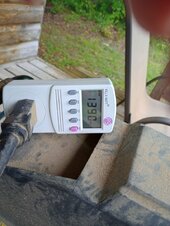 IMG_20240514_135856019_HDR.jpg147.5 KB · Views: 9
IMG_20240514_135856019_HDR.jpg147.5 KB · Views: 9 -
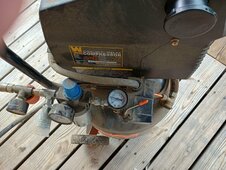 IMG_20240514_091950926_HDR.jpg302.8 KB · Views: 9
IMG_20240514_091950926_HDR.jpg302.8 KB · Views: 9 -
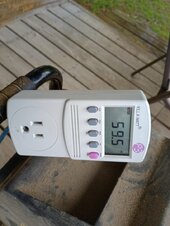 IMG_20240514_135716161_HDR.jpg118.8 KB · Views: 10
IMG_20240514_135716161_HDR.jpg118.8 KB · Views: 10 -
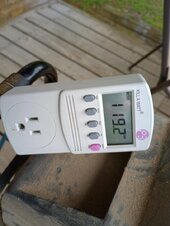 IMG_20240514_135710120_HDR.jpg102.6 KB · Views: 11
IMG_20240514_135710120_HDR.jpg102.6 KB · Views: 11 -
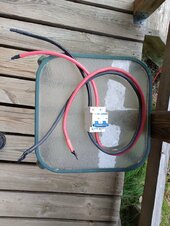 IMG_20240513_074257127.jpg226.6 KB · Views: 11
IMG_20240513_074257127.jpg226.6 KB · Views: 11 -
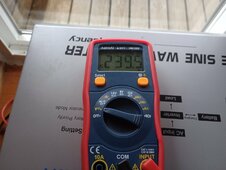 IMG_20240514_135655513.jpg151.2 KB · Views: 14
IMG_20240514_135655513.jpg151.2 KB · Views: 14 -
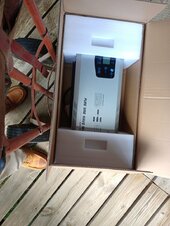 IMG_20240514_133928802.jpg167.2 KB · Views: 14
IMG_20240514_133928802.jpg167.2 KB · Views: 14




